Home> Company News> Kawasaki KVF360 Prairie 360 1999-2009 Repair Manual
- AddressTianqiao, Beiyuan District, Jinan,Shandong
- Factory Addresstian qiao,jinan, shandong,China(Mainland)
- Worktime9:00-18:00(Beijing time)
- Phone(Working Time)86 0531-8299 9952
- Fax86 0531 -82990353
The Kawasaki KVF360 Prairie 360 is a popular all-terrain vehicle used for various outdoor activities, including hunting, farming, and recreational riding. The vehicle is renowned for its durability and ruggedness, making it a favorite among outdoor enthusiasts. Like other vehicles, the Kawasaki KVF360 Prairie 360 uses a hydraulic pump to power its transmission and other functions.
The hydraulic pump is a vital component of the Kawasaki KVF360 Prairie 360, providing the necessary power for the vehicle's transmission and other functions. Regular maintenance and repair of the hydraulic pump are crucial for the optimal performance of the vehicle. Neglecting maintenance can lead to reduced performance, increased wear and tear, and costly repairs or replacements.
To ensure the proper maintenance and repair of the Kawasaki KVF360 Prairie 360 hydraulic pump, vehicle owners and technicians can refer to the Kawasaki KVF360 Prairie 360 1999-2009 repair manual. This comprehensive manual provides a detailed guide on repairing and maintaining the hydraulic pump, enabling users to carry out maintenance and repair procedures effectively.
In this article, we will focus on the Kawasaki KVF360 Prairie 360 hydraulic pump repair manual and how it can help users repair and maintain their hydraulic pumps effectively. We will explore the importance of regular maintenance, common hydraulic pump problems and troubleshooting, repair procedures for hydraulic pump components, and safety tips for hydraulic pump repair.
Understanding Kawasaki KVF360 Prairie 360 Hydraulic Pump
The Kawasaki KVF360 Prairie 360 is a popular all-terrain vehicle that is widely used for various outdoor activities, such as hunting, farming, and off-road racing. The vehicle's transmission and other functions are powered by a hydraulic pump, which is a vital component that requires regular maintenance and repair to ensure optimal performance and longevity.
To understand the Kawasaki KVF360 Prairie 360 hydraulic pump, it is essential to grasp its structure and working principles. The hydraulic pump is a mechanical device that uses pressure to move fluids, such as oil or water, through a system of tubes and hoses. The pump's primary function is to convert mechanical energy into hydraulic energy, which is used to power various hydraulic systems, such as transmissions, steering, and brakes.
The Kawasaki KVF360 Prairie 360 hydraulic pump features a unique design that enhances its reliability and performance. The pump is made up of several components, such as pistons, gears, and valves, which work together to create hydraulic pressure and move fluid through the system. The pump's design is optimized for the vehicle's specific application, ensuring maximum efficiency and power output.
Understanding the structure and working principles of the Kawasaki KVF360 Prairie 360 hydraulic pump is crucial for effective maintenance and repair. With the help of the repair manual, vehicle owners and technicians can diagnose and fix hydraulic pump problems quickly and efficiently, ensuring that the vehicle operates at its optimal performance level.
Importance of Regular Maintenance
Regular maintenance is essential for the optimal performance and longevity of the Kawasaki KVF360 Prairie 360 hydraulic pump. Neglecting maintenance can lead to reduced performance, increased wear and tear, and costly repairs or replacements. The repair manual provides information on regular maintenance procedures to ensure the hydraulic pump operates efficiently.
One of the primary maintenance procedures is regular inspection, which helps to identify potential problems before they escalate. During inspection, vehicle owners and technicians should check the hydraulic pump's fluid level and quality, as well as the hoses and connections for leaks or damage. If any leaks or damage are found, they should be addressed immediately to prevent further damage to the hydraulic system.
Another essential maintenance procedure is cleaning. The hydraulic pump and its components can accumulate dirt, debris, and other contaminants over time, which can affect their performance and longevity. Regular cleaning using the recommended cleaning agents can help to keep the hydraulic pump clean and free from contaminants.
Lubrication is another essential maintenance procedure that helps to keep the hydraulic pump operating smoothly. Regular lubrication ensures that the hydraulic pump's moving parts are adequately lubricated, reducing friction and wear and tear.
Additionally, vehicle owners and technicians should check the hydraulic pump's filters regularly. Dirty or clogged filters can restrict fluid flow, reducing the hydraulic pump's performance and increasing the risk of damage. Filters should be cleaned or replaced regularly to ensure the hydraulic pump operates at its optimal performance.
Regular maintenance not only ensures optimal hydraulic pump performance but also helps to extend the pump's lifespan. It is crucial to follow the recommended maintenance schedule in the repair manual to avoid costly repairs or replacements due to neglected maintenance.
In summary, regular maintenance is essential for the optimal performance and longevity of the Kawasaki KVF360 Prairie 360 hydraulic pump. The repair manual provides detailed information on the recommended maintenance procedures, including inspection, cleaning, lubrication, and filter replacement. Vehicle owners and technicians should follow the recommended maintenance schedule to ensure the hydraulic pump operates efficiently and reliably.
Common Hydraulic Pump Problems and Troubleshooting
Regular maintenance is critical to ensuring the optimal performance and longevity of the Kawasaki KVF360 Prairie 360 hydraulic pump. Neglecting maintenance can result in reduced performance, increased wear and tear, and costly repairs or replacements. It is important to be aware of common hydraulic pump problems and troubleshooting procedures to address any issues that arise promptly. The repair manual provides detailed information on the common hydraulic pump problems that may affect the Kawasaki KVF360 Prairie 360 and their troubleshooting procedures.
One of the most common hydraulic pump problems in the Kawasaki KVF360 Prairie 360 is low fluid pressure. Low fluid pressure may be caused by a variety of issues, including a malfunctioning relief valve, a clogged or dirty oil filter, or a damaged pump. Symptoms of low fluid pressure may include slow or sluggish movement of the vehicle or a decrease in power.
Another common issue is hydraulic pump leaks. Leaks can be caused by various factors, including worn seals, loose connections, or damaged hoses. Leaks can result in reduced performance and damage to other components of the vehicle. Symptoms of hydraulic pump leaks may include low fluid levels, fluid puddles underneath the vehicle, or difficulty in steering or braking.
Noise is also a common problem in hydraulic pumps. The source of the noise may be due to worn or damaged components, air in the system, or contaminated fluid. Noise may be accompanied by reduced performance, leaks, or overheating. It is essential to identify the source of the noise promptly to prevent further damage to the hydraulic pump.
The repair manual provides detailed troubleshooting procedures for these and other hydraulic pump problems that may arise in the Kawasaki KVF360 Prairie 360. By following these procedures, vehicle owners and technicians can diagnose and fix issues quickly and effectively, reducing downtime and increasing the longevity of the vehicle.
Repair Procedures for Hydraulic Pump Components
The Kawasaki KVF360 Prairie 360 hydraulic pump is a complex assembly of various components that work together to provide the necessary power for transmission and other functions. Over time, these components may wear out, become damaged or malfunction, leading to reduced performance or even failure of the hydraulic pump. In such cases, repair or replacement of the affected components may be necessary to restore the optimal performance of the vehicle. The Kawasaki KVF360 Prairie 360 1999-2009 repair manual provides detailed information on the repair procedures for hydraulic pump components, enabling vehicle owners and technicians to carry out effective repairs.
Some of the components that may require repair or replacement in the hydraulic pump include the following:
- Piston
The piston is a critical component of the hydraulic pump that converts the pressure of the fluid into mechanical power. Pistons may become worn out, damaged, or corroded over time, leading to reduced performance or even failure of the hydraulic pump. To repair or replace a piston, the repair manual provides a step-by-step guide that includes the following procedures:
- Removal of the hydraulic pump from the vehicle
- Disassembly of the hydraulic pump to access the piston
- Inspection of the piston for wear, damage, or corrosion
- Removal of the damaged or worn piston
- Installation of a new piston
- Reassembly of the hydraulic pump
- Installation of the hydraulic pump back into the vehicle
- Testing the hydraulic pump for proper operation and performance.
- Valve
Valves play a critical role in regulating the flow of fluid in the hydraulic pump. They may become damaged, worn out, or clogged with debris over time, leading to reduced performance or even failure of the hydraulic pump. To repair or replace a valve, the repair manual provides a step-by-step guide that includes the following procedures:
- Removal of the hydraulic pump from the vehicle
- Disassembly of the hydraulic pump to access the valve
- Inspection of the valve for wear, damage, or debris
- Removal of the damaged or worn valve
- Cleaning or replacement of the valve if necessary
- Installation of a new valve
- Reassembly of the hydraulic pump
- Installation of the hydraulic pump back into the vehicle
- Testing the hydraulic pump for proper operation and performance.
- Gears
Gears are essential components of the hydraulic pump that transfer power from the motor to the pump. They may become damaged, worn out, or misaligned over time, leading to reduced performance or even failure of the hydraulic pump. To repair or replace gears, the repair manual provides a step-by-step guide that includes the following procedures:
- Removal of the hydraulic pump from the vehicle
- Disassembly of the hydraulic pump to access the gears
- Inspection of the gears for wear, damage, or misalignment
- Removal of the damaged or worn gears
- Installation of new gears
- Reassembly of the hydraulic pump
- Installation of the hydraulic pump back into the vehicle
- Testing the hydraulic pump for proper operation and performance.
- Seals
Seals are critical components of the hydraulic pump that prevent fluid leakage and ensure optimal performance. They may become worn out, damaged, or corroded over time, leading to fluid leakage and reduced performance of the hydraulic pump. To repair or replace seals, the repair manual provides a step-by-step guide that includes the following procedures:
- Removal of the hydraulic pump from the vehicle
- Disassembly of the hydraulic pump to access the seals
- Inspection of the seals for wear, damage, or corrosion
- Removal of the damaged or worn seals
- Installation of new seals
- Reassembly of the hydraulic pump
- Installation of the hydraulic pump back into the vehicle
- Testing the hydraulic pump for proper operation and performance.
Tips for Safe Hydraulic Pump Repair
The repair and maintenance of hydraulic pumps can be a complex and potentially hazardous process, especially for inexperienced users. To ensure safe and effective repair of the Kawasaki KVF360 Prairie 360 hydraulic pump, it is essential to follow the safety guidelines and precautions outlined in the repair manual.
One of the most critical safety precautions is to ensure that the vehicle is in a stable and secure position before attempting any repair work on the hydraulic pump. This may involve placing the vehicle on a level surface, blocking the wheels, or using jack stands to lift the vehicle.
Another essential safety measure is to ensure that the hydraulic system is depressurized before any repair work is undertaken. Failure to depressurize the system can result in accidental activation of hydraulic components, leading to serious injury or property damage. The repair manual provides detailed instructions on how to safely depressurize the hydraulic system.
When repairing or replacing hydraulic pump components, it is crucial to use the appropriate tools and equipment to ensure safe and effective repair. Using incorrect tools or equipment can lead to improper repair, which may result in system failure or injury.
It is also essential to follow the recommended repair procedures outlined in the repair manual to ensure that the repair work is carried out correctly. The manual provides step-by-step instructions for removing, repairing, and replacing hydraulic pump components.
Users are advised to wear appropriate personal protective equipment, such as gloves and safety glasses, to prevent injury from flying debris or accidental spills of hydraulic fluid.
In summary, the repair and maintenance of hydraulic pumps can be a hazardous process if proper safety precautions are not followed. To ensure safe and effective repair of the Kawasaki KVF360 Prairie 360 hydraulic pump, users must follow the safety guidelines and precautions outlined in the repair manual.
Conclusion
Regular maintenance and repair of the hydraulic pump are crucial for optimal performance and longevity of the Kawasaki KVF360 Prairie 360 vehicle. Neglecting maintenance can lead to reduced performance, increased wear and tear, and costly repairs or replacements. The Kawasaki KVF360 Prairie 360 1999-2009 repair manual provides a detailed guide on repairing and maintaining the hydraulic pump, enabling vehicle owners and technicians to carry out repairs and maintenance procedures effectively.
The hydraulic pump is a critical component of the Kawasaki KVF360 Prairie 360 vehicle, providing the necessary power for transmission and other functions. Understanding the structure and working principles of the hydraulic pump is crucial for effective maintenance and repair. The Kawasaki KVF360 Prairie 360 hydraulic pump features a unique design that enhances its reliability and performance. The repair manual provides detailed information on the structure, function, and troubleshooting of the hydraulic pump.
The repair manual provides information on regular maintenance procedures such as inspection, cleaning, and lubrication. Regular maintenance is critical to the optimal performance and longevity of the Kawasaki KVF360 Prairie 360 hydraulic pump. Neglecting maintenance can lead to reduced performance, increased wear and tear, and costly repairs or replacements. It is recommended to carry out regular maintenance procedures as specified in the repair manual.
Despite regular maintenance, hydraulic pumps may experience various problems that affect their performance and reliability. Common hydraulic pump problems in Kawasaki KVF360 Prairie 360 include low fluid pressure, leaks, and noise. The repair manual provides detailed troubleshooting procedures for these and other problems to enable vehicle owners and technicians to fix the issues. Following the troubleshooting procedures specified in the repair manual can help to identify and resolve issues before they lead to costly repairs or replacements.
The Kawasaki KVF360 Prairie 360 hydraulic pump is made up of various components, including pistons, valves, and gears. The repair manual provides detailed information on the removal, repair, and replacement of these components. The manual also includes diagrams and illustrations to help users understand the procedures better. Users are advised to follow the instructions in the manual strictly to prevent damage to the hydraulic pump and ensure proper functioning.
Repairing hydraulic pumps can be hazardous, especially for inexperienced users. The repair manual provides safety guidelines and precautions to ensure safe and effective repair of the Kawasaki KVF360 Prairie 360 hydraulic pump. Users are advised to follow the safety guidelines strictly to prevent accidents and injuries. It is recommended to seek professional assistance if unsure about any aspect of repairing the hydraulic pump.
In conclusion, regular maintenance and repair of the Kawasaki KVF360 Prairie 360 hydraulic pump are crucial for optimal performance and longevity of the vehicle. The Kawasaki KVF360 Prairie 360 1999-2009 repair manual is a valuable resource for vehicle owners and technicians seeking to carry out maintenance and repair procedures. The manual provides detailed information on the structure, function, maintenance, troubleshooting, and repair procedures of the hydraulic pump, enabling users to fix issues effectively and efficiently.


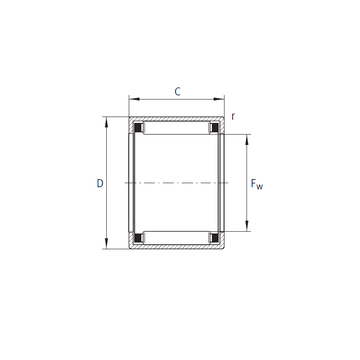 SCE5612 INA Needle Roller Bearings
SCE5612 INA Needle Roller Bearings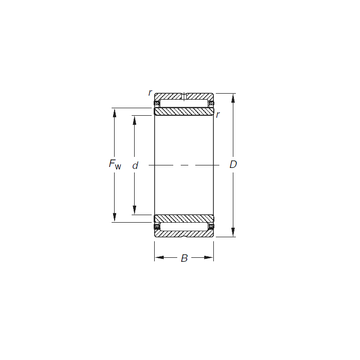 NKJ20/16 Timken Needle Roller Bearings
NKJ20/16 Timken Needle Roller Bearings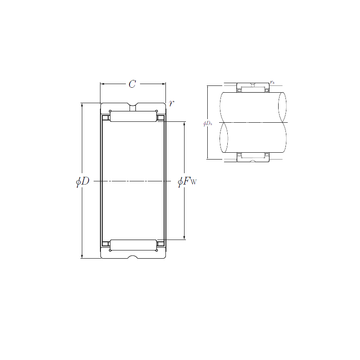 RNA4976 NTN Needle Roller Bearings
RNA4976 NTN Needle Roller Bearings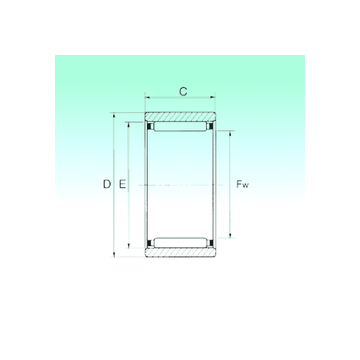 RNAO 35x47x16 NBS Needle Roller Bearings
RNAO 35x47x16 NBS Needle Roller Bearings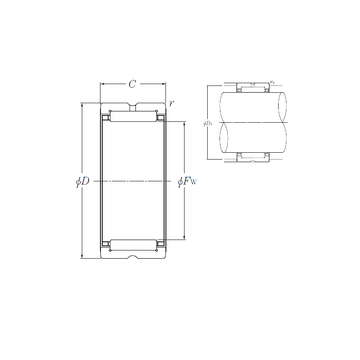 NK42/20R NTN Needle Roller Bearings
NK42/20R NTN Needle Roller Bearings